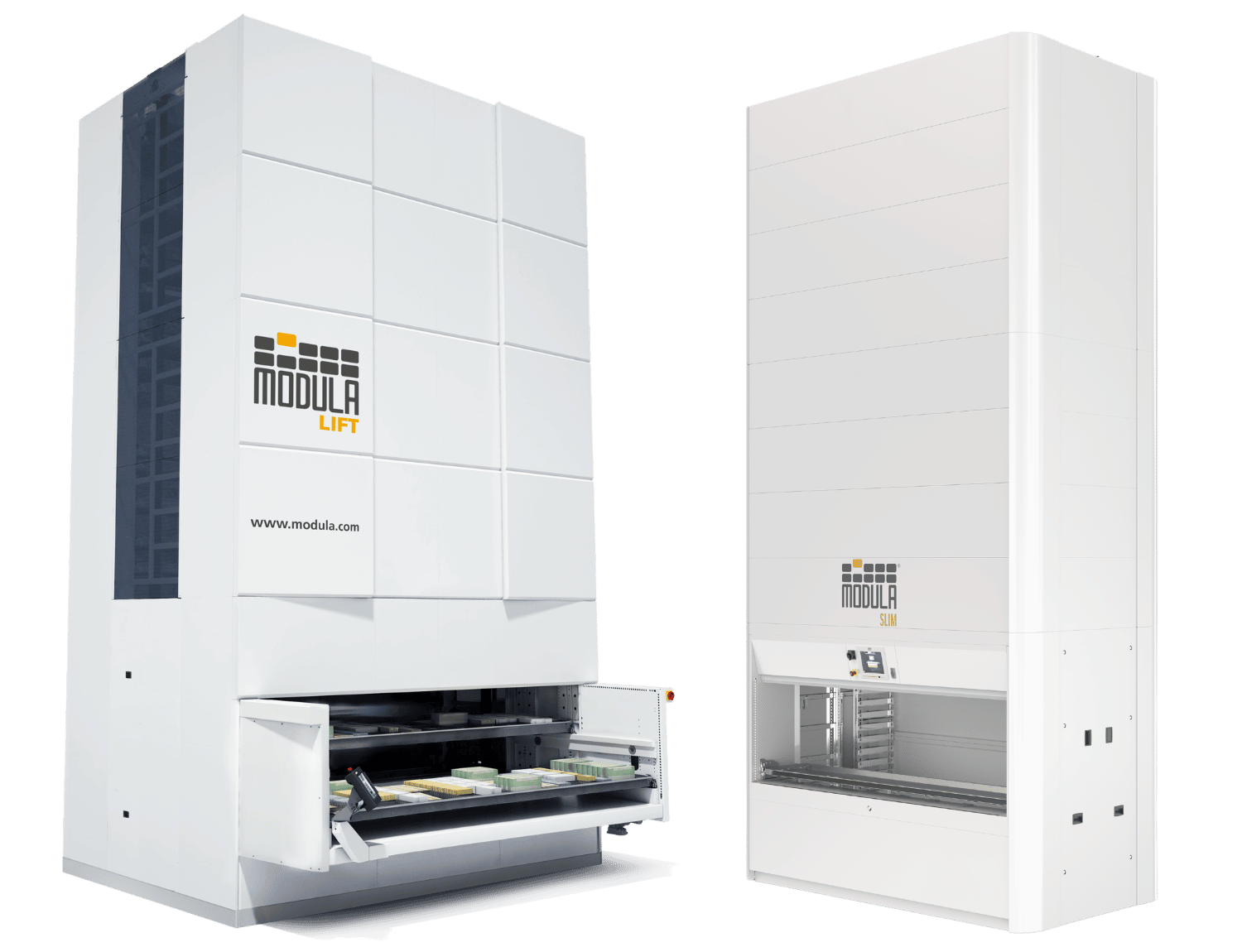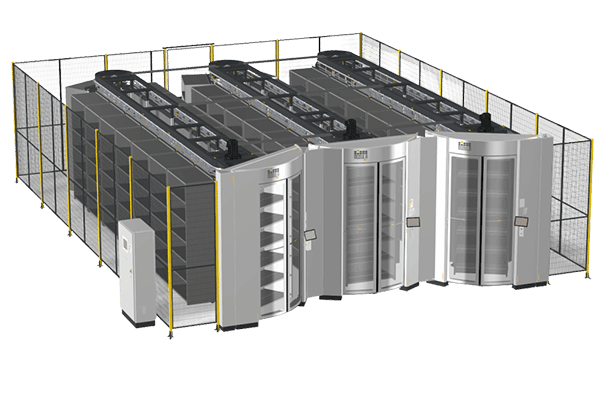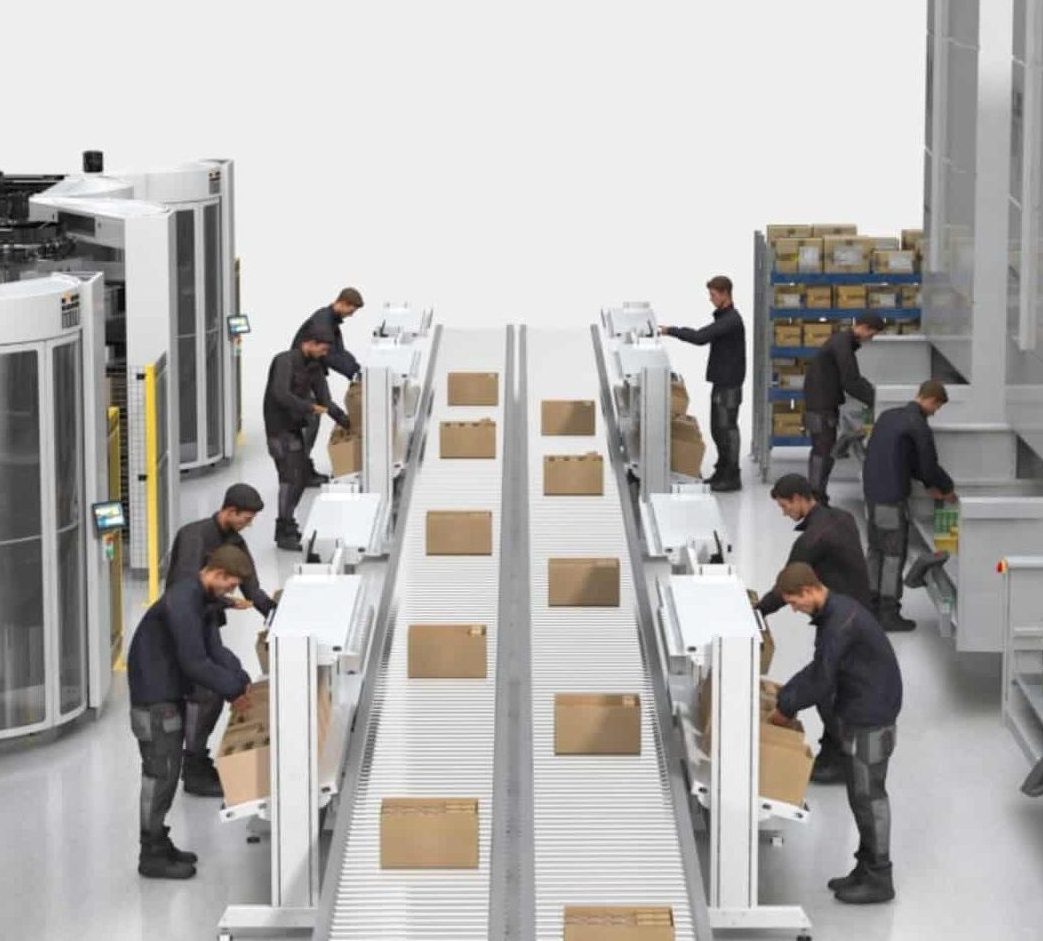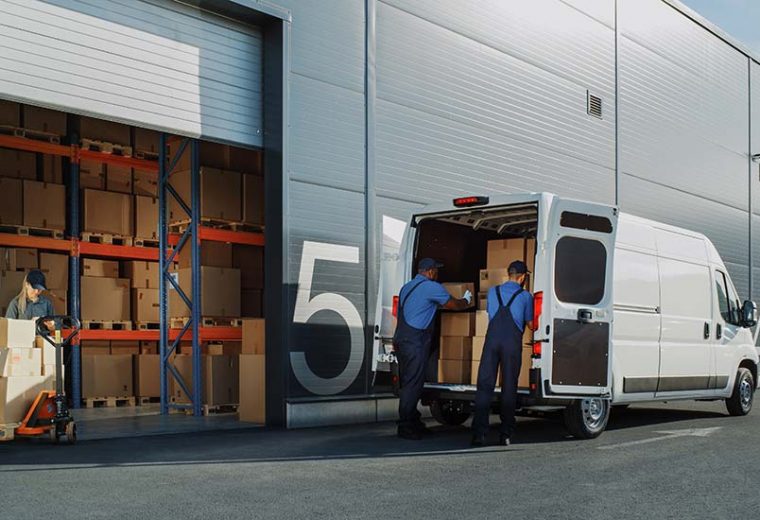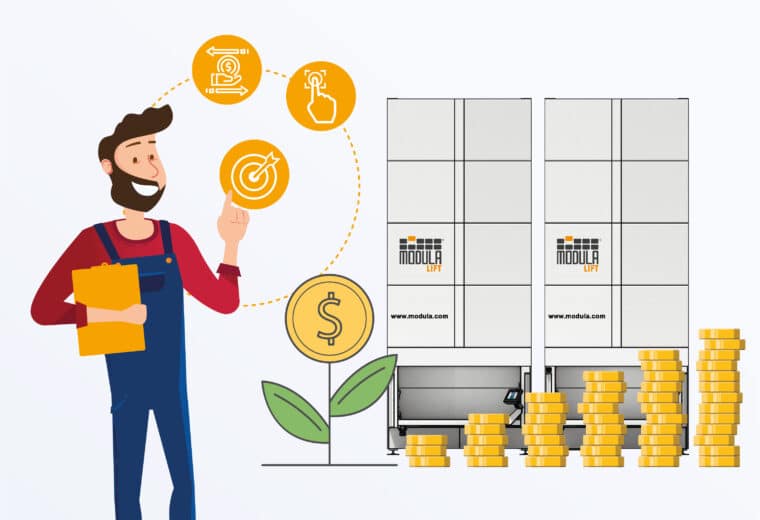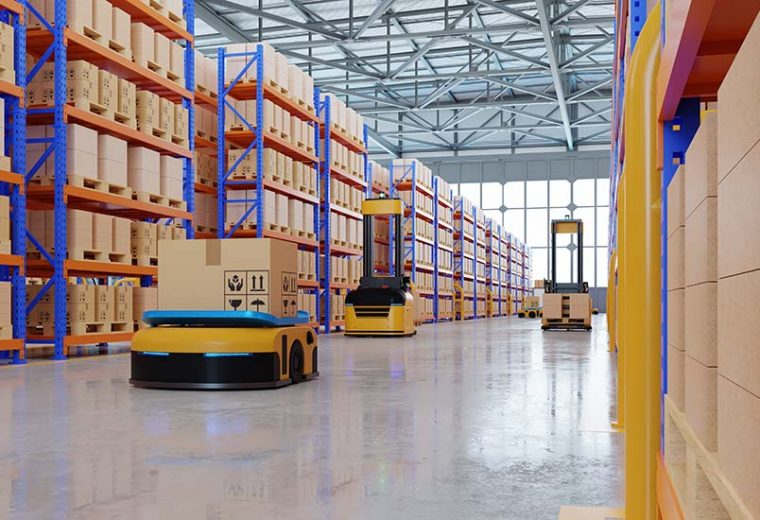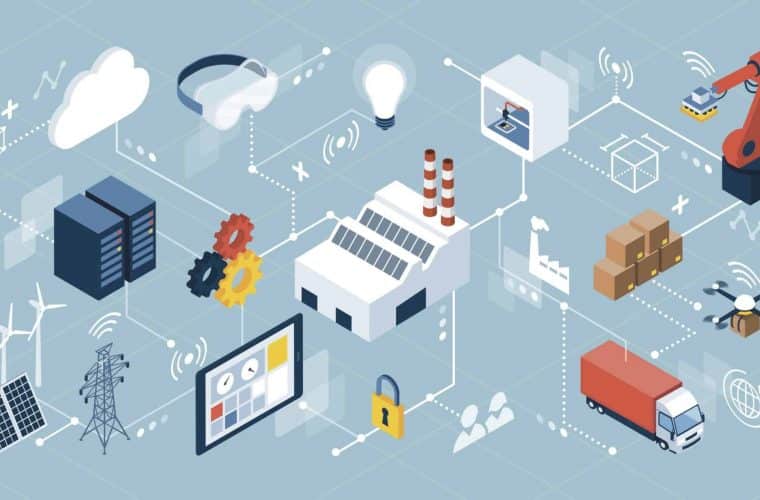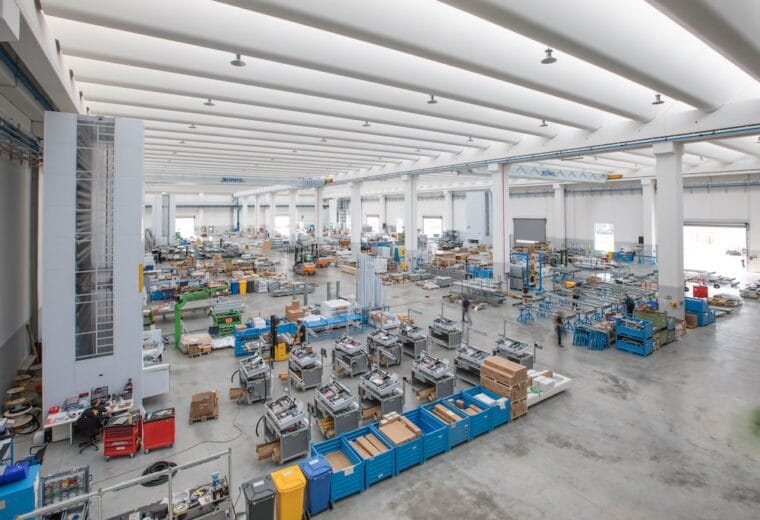What Will the Warehouse of the Future Look Like? Futuristic Warehouse Models & Technologies
From robots that independently navigate warehouse aisles to artificial intelligence solutions that are able to forecast demand, a futuristic warehouse is not just a concept, but a reality that is reinventing the warehousing industry.
We’ll share all you need to know about the future of warehousing, including models that will be seen more often and futuristic warehouse technologies that will continue to evolve.
We’ll also introduce you to automated warehouse solutions at Modula, designed to help you build a futuristic warehouse that offers increased productivity, safety and organization.
Where Is the Future of Warehousing Trending?
The future of warehousing will be driven by a wave of advanced technologies and evolving models designed to meet consumer demand, such as same day deliveries.
To keep up with consumer expectations of fast-tracked delivery, without making a costly jump to a bigger warehouse space, more businesses will invest in on-demand warehousing.
Another significant shift will be the increased presence of automation, with robots and automated systems taking over the vast majority of manual tasks in the warehouse such as sorting, picking and packing.
In fact, a 2023 industry report found that 90% of supply chain leaders are planning to spend over $1 million on automated solutions this year alone — an increase of 24% from the previous year.
This transformation will boost productivity, optimize warehouse storage, minimize picking errors and provide a safer working environment for warehouse operators.
In addition, a growing focus on sustainability will also characterize the future of warehousing.
As consumers become more environmentally conscious, businesses must follow suit. Green warehousing practices, such as using renewable energy, implementing recycling programs, and reducing waste will become the norm in the next five to 10 years.
Futuristic Warehouse Models
The warehouse of the future will incorporate automation on a larger scale, increase sustainability practices and implement new models that are better equipped to meet consumer demand.
Models that will become more common in warehousing include:
1. On-Demand Warehousing
On-demand warehousing, also known as flexible warehousing, is a warehouse fulfillment model that provides flexible warehousing space to companies on an as-needed basis. When extra storage space is needed, the business can turn to its on-demand partner.
While traditional warehousing typically involves a long-term lease, on-demand warehousing helps solve cost concerns surrounding this model by providing short-term storage options.
It also allows companies to partner with 3PL providers to meet consumer expectations surrounding fast-tracked shipping by facilitating same-day order fulfillment and delivery.
2. Smart Warehousing
Smart warehousing is a warehouse fulfillment model that uses advanced technologies such as artificial intelligence, Internet of Things, robots and automated storage and retrieval systems to automate manual tasks in the warehouse.
Smart warehouse systems boost productivity and inventory management, while reducing errors caused by manual labor.
3. Green Warehousing
Green warehousing is a warehouse fulfillment model that utilizes sustainable and eco-friendly practices to reduce the environmental impact of the logistics and supply chain industry.
Green warehousing practices include utilizing renewable energy sources (solar power, for example), implementing energy-efficient heating and lighting and using eco-friendly packaging materials (such as compostable packaging) to reduce waste.
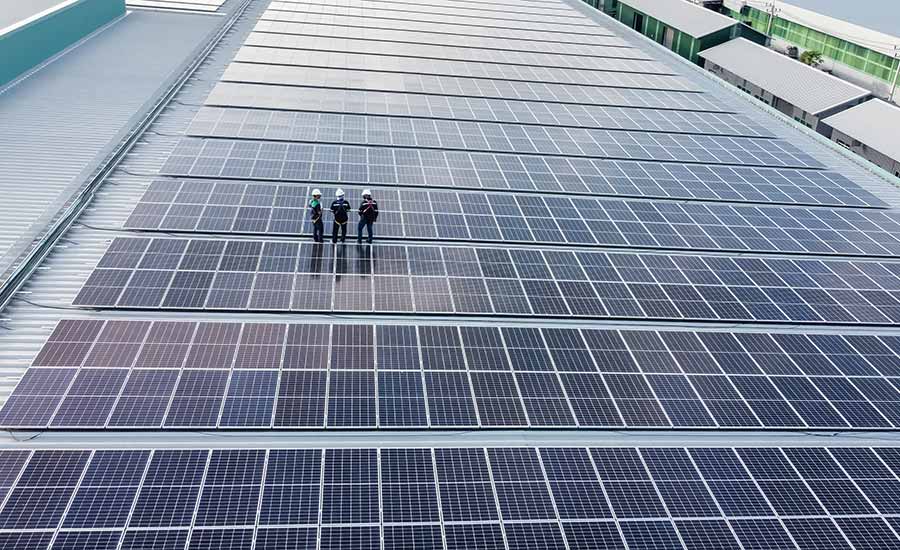
Futuristic Warehouse Technologies
From flying drones to robots that are able to sort, pick and pack without human intervention, a wide range of technologies will be used within futuristic warehouses.
1. Automated Storage and Retrieval Systems
Automated storage and retrieval systems (ASRS) are computer-controlled technologies that store and retrieve inventory from specific locations inside a warehouse.
ASRS work with a warehouse management system (WMS) to identify inventory that should be retrieved. This futuristic warehouse technology includes automated warehouse solutions such as vertical lift modules, horizontal carousels, unit-loaders, mini-loaders and tote shuttles.

2. Artificial Intelligence (AI) and Machine Learning (ML)
Artificial intelligence (AI) is the ability of a robot or computer to perform manual tasks such as transporting, picking and packing.
AI boosts efficiency and accuracy in your warehouse operations by preventing mispicks, monitoring stock levels and packing orders with minimal human intervention.
Machine learning (ML) is a branch of AI technology in which a machine learns from experience. With this type of technology, a machine analyzes large volumes of data to identify patterns and make informed decisions or predictions with minimal human intervention.
ML algorithms can also adapt and refine their performance over time, becoming more accurate as they process more data.
3. Mobile Robots (AMRs and AGVs)
Automatic guided vehicles (AGVs) are computer-controlled and sensor-guided robots that transport items within the warehouse.
AGVs are equipped with wires and reflective markers and move through pre-defined pathways. They require guidance from warehouse operators to function.
On the other hand, autonomous mobile robots (AMRs) are the descendants of AGVs. AMRs are sophisticated robots that utilize artificial intelligence and sensors without needing the guidance of warehouse employees to function.
While both AGVs and AMRs can transport inventory within the facility, AMRs are more advanced robots that can independently navigate the warehouse without pre-defined routes.
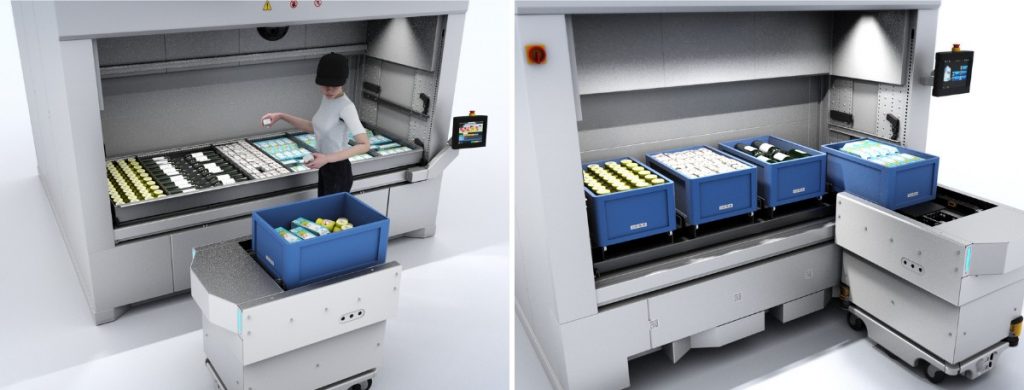
4. Internet of Things (IoT)
Internet of Things (IoT) devices include RFID tags, sensors and wearable devices that track inventory and monitor equipment and its temperature.
Smart sensors can be attached to inventory, reducing the risk of misplaced items.
In addition, IoT devices can monitor the condition of warehouse equipment in real time. They can predict when equipment might fail, so you can schedule predictive maintenance, reducing costly downtimes.
5. Augmented Reality (AR) and Virtual Reality (VR)
Augmented reality (AR) is a technology that utilizes 3D modelling and multimedia to integrate images, videos or sounds into the real environment, creating an interactive experience.
On the other hand, virtual reality (VR) is a technology that utilizes machine learning, neural networks and a pose tracking system to create a computer-generated environment.
Unlike virtual reality, which creates a completely digital environment, augmented reality adds to or “augments” your existing environment.
6. Warehouse Drones
Warehouse drones, also known as unmanned aerial vehicles (UAVs), are sophisticated aerial robots that retrieve goods and capture high-resolution images of your inventory from above.
Warehouse drones are equipped with sensors and cameras, and they can either be programmed to fly autonomously or controlled by warehouse operators.

How To Build a Futuristic Warehouse With Modula Automated Warehouse Solutions
As an industry leader in advanced automated storage solutions and warehouse management systems, Modula transforms warehouses across industries to improve efficiency, productivity, picking accuracy and inventory management.
Our automated warehouse solutions include:
1. Modula Vertical Lift Module
Modula’s Vertical Lift Modules (VLMs) utilize your warehouse’s ceiling height to create more storage and improve warehouse organization.
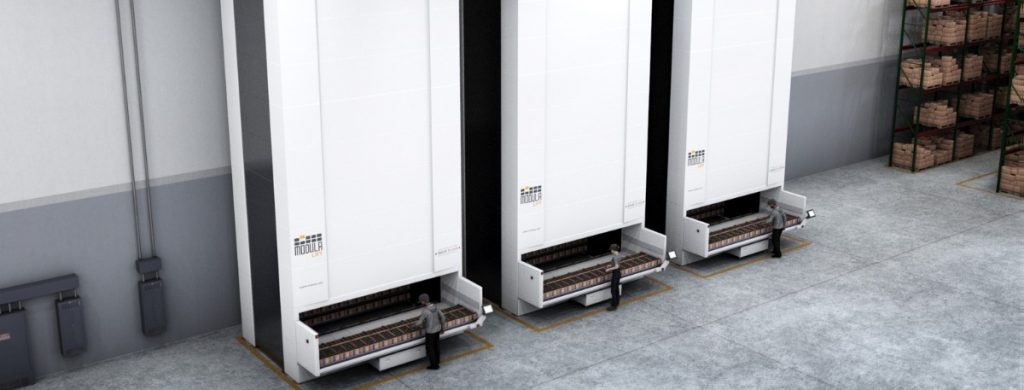
Our VLM models include:
- Modula Lift: The ideal storage solution for spare and industrial parts, available in a wide range of capacities and sizes
- Modula Slim: The ideal storage solution for facilities with minimal floor space, thanks to its compact size
Modula VLMs allow you to:
- Save 90% of your floor space by taking advantage of your ceiling height
- Increase picking speeds to 300 or more lines per hour
- Process batch orders in less time with a throughput of up to 140 trays per hour
- Improve employee safety by automatically delivering inventory to your warehouse operators
- Secure goods in an enclosed system with a reliable locking feature and restricted access
2. Modula Horizontal Carousels
The Modula Horizontal Carousel (HC) is the ideal storage option for warehouses with limited ceiling height.
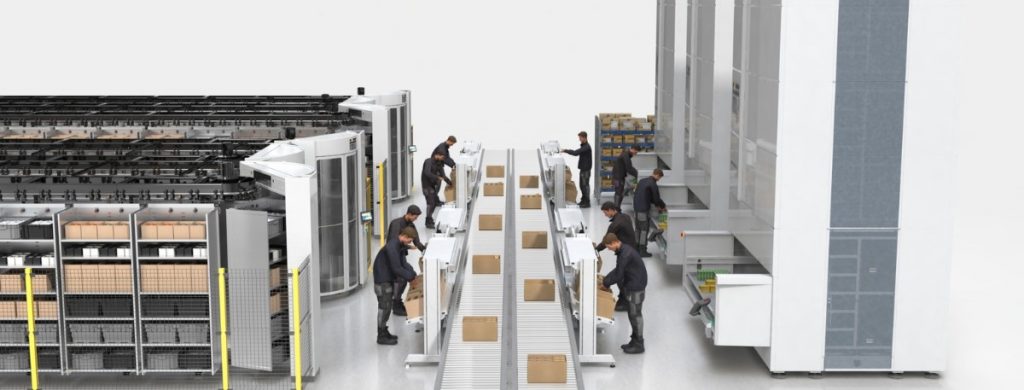
Modula HC allows you to:
- Skyrocket productivity with picking rates of up to 550 lines per hour for each warehouse employee
- Offer the safest working environment by eliminating physical strain
- Adjust shelf spacing to store different sizes of inventory
- Monitor and document picking operations in real time, providing complete traceability of stock levels and orders
- Experience 99% picking accuracy with our barcode readers and Put to Light Systems
3. Modula Picking Solutions
Modula picking solutions minimize the search time required for locating inventory and boost picking accuracy when processing individual or multiple orders.
Modula picking solutions allow you to:
- Boost picking speed and accuracy, thanks to Put to Light devices that help your warehouse operators navigate their way to the correct picking area
- Manage inventory more accurately, thanks to in-depth views of your current and forecasted inventory
4. Modula Web Analytics
Modula Web Analytics is a remote management, support and analytics platform that enables you to quickly collect data from your Modula vertical lift modules and horizontal carousels, regardless of where they are in your warehouse.
Built-in and turned on around-the-clock, it offers an intuitive online portal for you to manage and track your operations securely from any location and device.
Modula Web Analytics allows you to:
- Track your Modula automated warehouse solutions remotely
- Monitor your warehouse from any location with remote diagnostics, support and resolutions, while implementing predictive maintenance
- Track the status of your warehouse, including unit statistics, energy consumption and equipment health
- Receive real-time notifications about the status of each module
- Get reports on energy consumption, fulfilled orders, completed cycles and tray usage efficiency
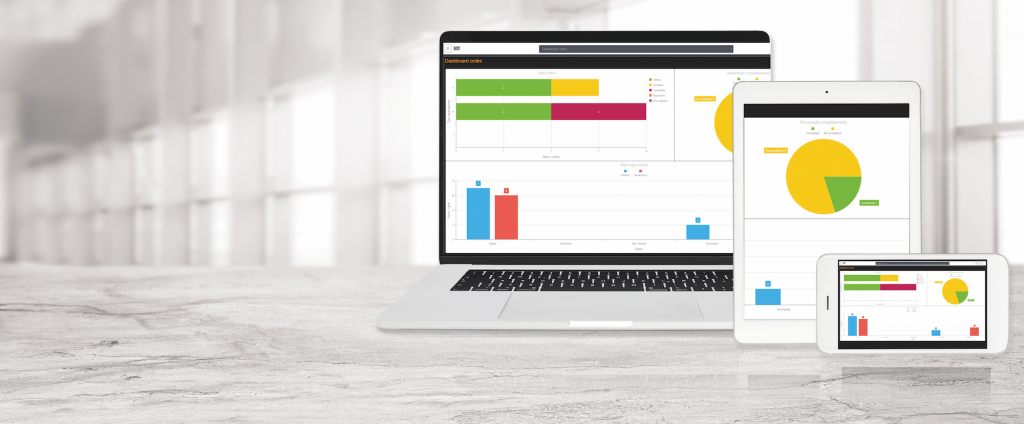
Wrapping Up on the Warehouse of the Future
In addition to sustainability practices and evolving models, the warehouse of the future is one that takes full advantage of automation to reduce manual tasks, improve safety and increase productivity.
The result will be an order fulfillment facility that is highly efficient, data-driven and capable of adapting to changing consumer needs.
With Modula’s automated warehouse solutions, you can achieve a futuristic warehouse that improves operational efficiency, maximizes space utilization, boosts picking accuracy and improves inventory management.
With 90% of supply chain leaders investing in automation this year, staying competitive means not only answering but getting ahead of consumer demand, using leading automated solutions.

